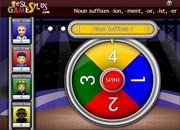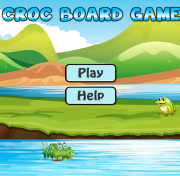Facts About the Moon – Science Game
This science game helps children practice more about moon. You may be interested in knowing the moon's origin, size and shape, and the craters on the surface. But did you know that the moon was created by the same processes as the Earth? The moon is our only natural satellite, and is a quarter of the Earth's diameter. This makes the moon the largest relative to a major planet and larger than any known dwarf planet. This article will help you learn more about the moon.
Dive Into Fascinating Facts About the Moon Through Interactive Game Exercises
The moon has long been a symbol of wonder and mystery. As children gaze up at the night sky, questions about this celestial body often arise. ""What causes the phases of the moon?"", ""Why does it look different every night?"", ""How did the moon form?"" are just a few of the queries that may pop into their young, inquisitive minds. To make the journey of discovery even more exciting, introducing facts of the moon through an interactive game can be both enlightening and entertaining.
Interactive Game: A New Approach to Learning About the Moon Facts
Traditional teaching methods have their place, but the digital age has brought forth a plethora of learning tools that captivate young learners. The interactive game format offers an immersive experience, allowing children to engage with facts for the moon in a way that's dynamic and memorable.
Facts About the Moon Science Game takes children on an educational adventure, letting them explore various aspects of the moon in an enjoyable, game-based format. Instead of simply reading or listening to information, kids interact, solve puzzles, and answer questions, ensuring they retain the knowledge they gain.
Highlights of the Science Game on Moon Facts
Dynamic Learning Experience: The game transforms traditional about the moon facts into actionable tasks, where children can actively participate, enhancing their understanding.
Tailored for Young Minds: The game design considers the cognitive capabilities of children, ensuring that it's neither too challenging nor too simple. This balance keeps their interest piqued and encourages continued learning.
Rich Visuals and Sound: The vibrant graphics and sound effects of the science game create a captivating atmosphere. As they navigate through the game, children not only learn but also enjoy the auditory and visual treats that accompany each fact.
Immediate Feedback: One of the advantages of an interactive game is the immediate feedback mechanism. When kids answer a question or solve a puzzle, they instantly learn if they're correct, aiding in reinforcing correct information and rectifying misconceptions.
Conclusion
The interactive game on facts of the moon promises an enriching experience, blending education with entertainment. It stands as a testament to how digital tools can revolutionize learning, making complex subjects like science enjoyable and approachable for young learners. So, next time your child is curious about the moon, direct them to this engaging game, and watch as they embark on a lunar adventure, all while gaining valuable knowledge."
Origin of the moon
The traditional Giant Impact Model of the Moon's formation assumes that the Moon formed by an impact with a Mars-sized body near the end of its accretion process. The impactor ejected a disk of material into orbit, forming the Moon. Giant impacts are extremely energetic events that vaporize a large part of the body that impacts. Ultimately, the circumterrestrial disk forms a multiphase mixture of vapor and liquid.
Its shape
While the Moon looks round to us during the night, it is actually an oval shape. Over thousands of years, super-hot tidal forces heated up the Moon's crust, giving it an oblate or lemon-like shape. As a result, the moon's oblate shape has been exaggerated by the gravitational forces of Earth. Scientists initially thought that dust in the Moon's crust would cause lunar landers to sink.
Its size
The surface area of the moon is almost the same as the surface area of Russia, the United States, and Canada. Despite these similarities, the moon is so far away from Earth that it would take over 100 years for us to get to it. Similarly, Russia is larger than the moon east to west, but smaller in width north to south. For this reason, the moon has a slightly smaller diameter than the Earth, so our distance to the moon is not so far away, despite being close.
Its craters
The moon and its craters were formed by the impact of a smaller body upon the moon. The resulting depression formed by the impact is known as an impact crater. The crater was a great depression that was formed because of the tremendous force of the impact. The moon's craters are the result of many years of intense impacts. This makes the moon look like a huge moon, but what is the actual cause of the impact?
Its gravity
What is gravity? Gravity is the force that attracts things with mass, so the more mass an object has, the greater its gravitational pull. A good example of the force is gravity on Mars, the fourth planet from the sun. It is half the diameter of Earth and has seasons, but Mars' mass is still small enough to create microgravity. Microgravity is less than 1/10th the force that holds Earth and Mars together at sea level.









